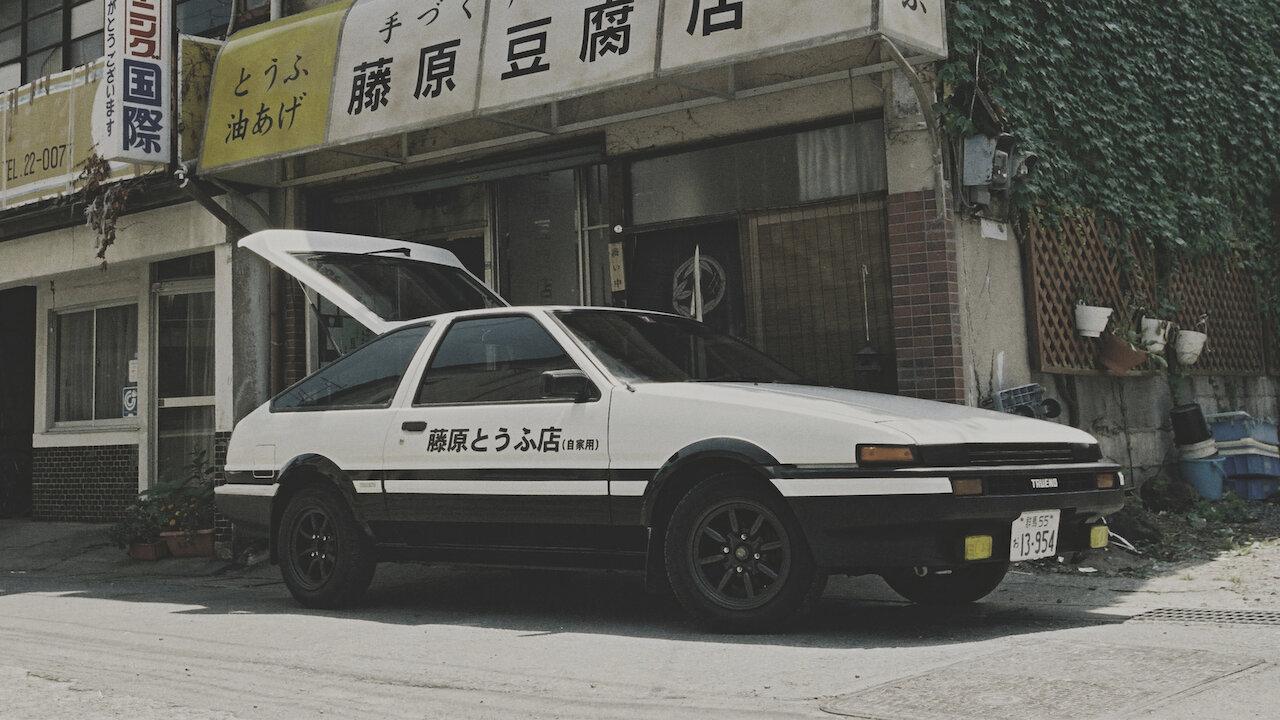Beep beep! So you decided to retire that janky 15-year-old mamachari and buy a car, but then you realized there are suddenly a lot of other things to consider. Oops.
Here’s a handy reference guide for what you should expect when driving in Gunma.
It’s best to inform your CO about your intent to own/rent a car for use in your free time, and they can likely assist you with insurance matters and paperwork. Furthermore, you may need permission from your CO to use your car for work-related duties (e.g. commuting or any other driving during work hours). Once that’s out of the way, it’s time to vrrroom! Almost.
What do I need to drive?
In Japan, you need one of the following:
- A valid Japanese driver’s license (for information on obtaining one, see this guide); OR
- Both a valid license from your home country AND a valid International Driving Permit (IDP)
Note that an IDP is valid for one year from the date you entered Japan, or for one year from the date of issue written on the IDP, whichever comes earlier. You must have obtained your IDP before coming to Japan, and keep both your home license and the IDP on you when you drive.

This next part is really important, so I’m going to make it huge. Read it, absorb it, and read it again. Please.
The penalty for driving without a license/IDP can include prison and a monetary fine. You may even be fired from your workplace or end up being deported.
Even if you somehow manage to escape with “just” a fine, you will be a few thousand dollars poorer, not to mention lawyer fees, missed work time, and a potential criminal record against your name.
It is, therefore, STRONGLY recommended that you consider preparing to convert your IDP to a full Japanese licence within 90 days of arrival should you plan on staying longer than one year.
Car Types
In Japan, there are two main types of car-type vehicles—regular cars (futsuu jidousha, referred to as “white plates”) and kei cars (kei jidousha, referred to as “yellow plates”).
Kei Cars (Yellow Plates)
- No larger than 3.3 meters long x 1.48 meters wide
- Engine size not to exceed 660cc
- Max output of 64 horsepower
They are identified by yellow license plates, and their shaken inspection cost and their municipal car tax are much cheaper than a white-plate car’s (approximately ¥60,000 for prefectural tax and ¥8,000 for the municipal light vehicle car tax, depending on the age of the car and municipality). Supplemental insurance is cheaper as well.
Regular Cars (White Plates)
- Cars exceeding kei-class restrictions (basically every other passenger vehicle on the road)
Shaken and yearly car tax for these vehicles are significantly higher than kei-cars (¥90,000 or more for shaken and ¥34,000 for car tax). That being said, there is no such thing as a cheap good car. With a low purchase price often comes increased maintenance fees or a higher shaken, regardless of what plate type you have.
Costs of Car Ownership
There are many additional costs involved with buying a car that are not visible at first glance. For JETs staying less than two years, outright ownership may not be worth it compared to renting. Ultimately, it is up to you to decide whether or not it is an affordable option. This section will cover some of the costs you can expect to incur while owning a car.
Vehicle Inspection (車検 shaken)
Shaken is a mandatory vehicle inspection and is required every 1-3 years, depending on the age of the car. Costs vary widely, ranging from ¥70,000–¥200,000 for regular cars and upwards of ¥60,000 for kei-cars.
The inspection includes safety and emissions testing, the repairs necessary to bring the car up into shape (tires, brakes, oil, filters). Compulsory liability insurance is generally paid for at the same time as the shaken. This insurance does not cover most things in case of an accident, so consider taking out additional insurance. Most Contracting Organizations will require that you purchase it, and it usually isn’t too expensive.
Annual Automobile Tax (自動車税 jidoushazei)
For any motor vehicles (except mopeds) registered in your name as of April 1, you will receive a tax bill to be paid by May 31. The tax is based on engine size and adjusted for vehicle weight. The annual car tax is typically between ¥7,000 and ¥13,000 for kei-cars. For white-plates, it is between ¥ 29,500 and ¥ 51,000. Like most bills, this is payable at a convenience store. Remember to keep your receipt! It’s proof of tax payment and may be required for any future sale.
Insurance (保健 hoken)
Automobile insurance is divided into two categories: compulsory liability insurance (which is included with shaken) and optional supplementary insurance.
In the event of death or injury to a third party during the use of an automobile or motorized bicycle, compulsory insurance covers the damage suffered by the affected party. However, there are limits to the amount of compensation covered by this insurance so many Contracting Organizations require JETs to have supplemental insurance as well.
Routine Maintenance, Repairs, and Gas
Gas prices tend to sit at around ¥130-¥140 a litre as of early 2021; around ¥2000– ¥6,000 for a full tank of gas depending on the size of your tank.
Generally, things like wiper fluid can be bought and changed with ease; if hate getting your hands dirty, oil can be changed for a small fee and in less than an hour at most gas stations or Automobile stores. Gas stations can also check your tire pressure for free (though they will often try to upsell new tires).
The older your car, the more likely something will need to be replaced soon or break down and require repair. Repairs can be very expensive and may even be more than the worth of the car, so these are things to keep in mind before you buy.
Buying a Car
So you’ve decided what you want and what you can afford. Now’s the hard part!
Where to Buy
- Local dealers
- Gunma – Buy, Sell, Exchange Facebook page
- Car auctions
- Online (Rakuten Car Sales, Goo-net, etc.)
- Word of mouth (supervisor, co-workers, acquaintances, other JETs, etc.)
- Directly from your predecessor (You should never feel pressured to inherit a car this way, though you will likely find it to be your cheapest option)
- Ace Auto Service (Masami is wonderful, speaks excellent English, and has been helping JETs for years!)
Necessary Documents
If you are buying a car, ensure you take the following things with you:
- Parking Space Certificate (車庫証明書 shako shomeisho)
- Residency Certificate (住民票 juminhyo)
- Hanko Registration Certificate (印鑑証明 inkan shomeisho)
- Residency Card (在留カード zairyu card)
- Personal Seal (判子 hanko)
- Hanko Registration Certificate (印鑑証明 inkan shomeisho)
- Valid Driving License (運転免許 unten menkyo)
If you the seller, you also need to provide these three documents to the buyer:
- Compulsory Insurance Certificate (自賠責保険 jibaiseki hoken)
- Transfer of Ownership Certificate (譲渡書 joutoshou)
- Vehicle Abandonment Certificate (廃車証 haishashou)
Things to keep in mind
- Find out whether or not the car has had its recycle fee paid. Without it, you will need to pay to scrap your vehicle and get rid of it.
- There is a lot of paperwork, but the seller can usually assist you. Dealerships like TOYOPET may also help with paperwork as well.
- Dealership, ownership transfer fees, and shaken may not be included in the base price.
- Check when shaken is due and cross-shop by comparing prices with similar makes/models online.
- A valid parking space is usually required for white plate ownership. Depending on your area or city, you may need to visit your landlord and/or the local police for the document confirming that you have a parking space.
- Depending on your situation, you may also need proof of payment for the car’s most recent car tax and/or proof of the prior owner’s authorization of the sale (i.e. a stamped Letter of Attorney, (委任状 ininjou), from the seller)
Alternative Options
Owning a car just not for you? There are other ways to get around!
Scooters and Motorbikes
Mopeds are called 原付 (gentsuki) in Japanese, but sukuutaa is also common. You can drive a scooter if your IDP shows a motorcycle/scooter endorsement (usually an “A” in the topmost box), a Japanese car driving license (and nothing else!), or a specific Japanese moped license. This includes a written test available in English, a driving safety class, and a training course at the driving course itself, but no practical driving test. Mopeds are very economical with purchase prices from ¥50,000 to ¥100,000 and cost about ¥1,000 to fill a tank. Compulsory liability insurance is around ¥9,800 for two years. There is no shaken inspection and vehicle tax is a measly ¥1,000–¥4,000 a year. You cannot use them on the toll roads or carry a passenger, but they are definitely a viable and affordable alternative to owning a car.
Motorcycles are often called baiku or ootobaiku, and engine capacities above 250cc require shaken. A driving test is required to obtain a
Japanese license, and you must have a motorcycle endorsement on your foreign-issued license to skip the training program before taking the test. You must also pay compulsory liability insurance, but it is much cheaper than for a car.
Renting a Car
Another alternative for many Gunma JETs is leasing a car. Depending on the leaser, monthly costs range from about ¥17,000 for a kei-car and ¥20,000-25,000 for a white plate car, not including supplementary insurance. Many JETs find leasing to be more convenient than going through the hassle of purchasing and selling a car, especially if they are unsure of how long they will be staying in Japan. Most leasers also cover the shaken and major maintenance and repairs (as long as you were not the cause), and you may only need to pay for minor maintenance like oil changes. The quality (and the legality) of the service between leasers can vary greatly, so do your research and ask other JETs before committing yourself to any contracts.

